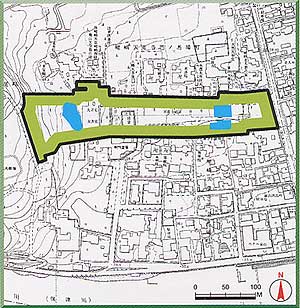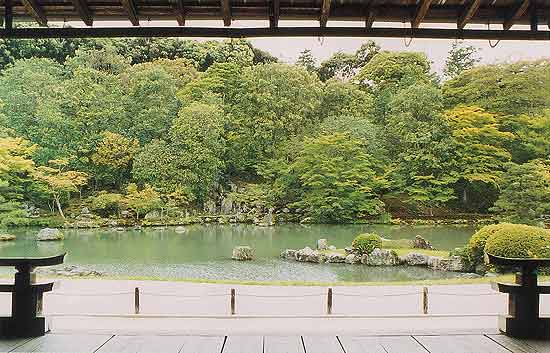| JAPANESE | |
| L. Tenryu-ji | |
| The garden for appreciating in the great Zen temple | |
| Establishment: The middle of the 14th century (1339) | |
| Originally built in 1255 as a detached palace with a view of Mt. Arashiyama, Tenryu-ji was converted into a Zen temple in 1339. With a typical layout coprising the Sanmon (main gate), Butsuden (Buddha hall), Hatto (lecture hall) and Hojo (abbot's quarters) arranged in a straight line, Tenryu-ji features a garden, credited to the monk Muso Soseki, which incorporates the natural topography of the hill behind the temple into the garden design. The principal temple structures burned down in military conflagrations, but the garden survives intact with the exception of additional work from the northern bank around to the eastern bank of the pond. This dynamic and sophisticated garden is built around apond with stone works forming Ryumon-baku waterfalls, stone bridges and rock islands. The emphasis on the view from the Hojo as well as its methods of arranging rock groupings exerted a significant influence on the stone works along ponnds and karesansui (dry landscape) style rock gardens developed during the MUromachi Period. |  |
 |
|
| Photo by Kanzaki Junichi | |
Map of "Historic Monuments of Ancient Kyoto" |
|